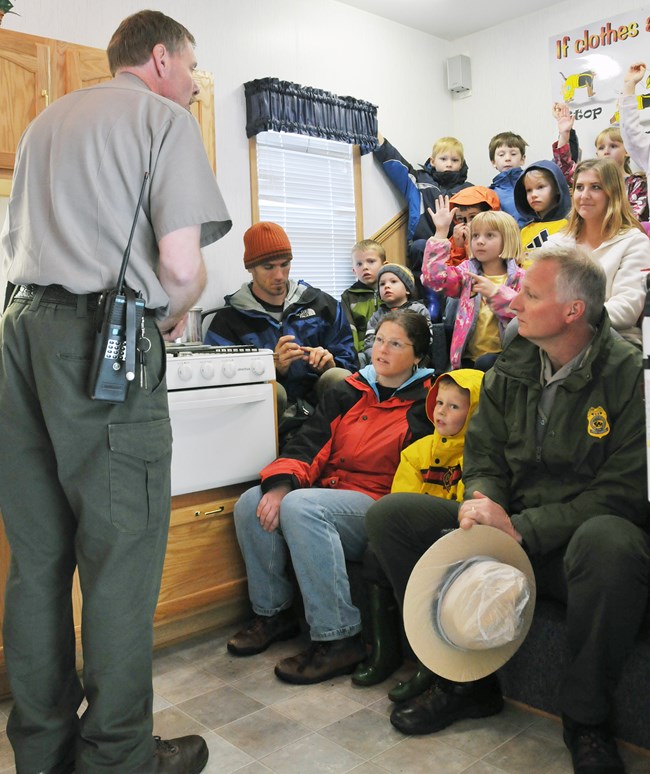Prevention of ignition is the first line of defense against fire in NPS buildings and is the priority of the Structural Fire program.

NPS
Fire protection systems, including fire sprinklers, when properly installed and maintained, save lives and conserve natural and historic resources. The Structural Fire prevention program encompasses three main elements in the preservation of life and the protection of buildings and their contents:
- Hazard identification and abatement—usually accomplished through building fire inspections whereby a trained individual inspects buildings for fire hazards and recommends abatement strategies.
- Fixed fire protection systems—alert occupants of a fire so they can quickly escape and suppress the fire, holding it in check, until competent firefighting forces arrive. Fire protection systems, including fire sprinklers, when properly installed and maintained, save lives and conserve natural and historic resources.
- Public education—key to informing people about fire hazards, how to avoid them, and what to do when a fire does occur. The Prevention 52 program provides relevant fire prevention messages 52 weeks of the year! Messages are crafted for NPS employees but are also helpful for the general public to learn how to prevent structural fires.
The NPS Structural Fire prevention program has developed a strategic plan and revised policy documents to ensure that appropriate emphasis and priorities are placed on these aspects of a comprehensive structural fire program.
The National Park Service, one of the largest property owners in the federal government, employs only a small cadre of professional structural fire personnel, most of whom work at the regional and national level. At most parks fire prevention and structural response is a secondary, or collateral-duty, assignment typically entrusted to law enforcement rangers or other park personnel.
The Structural Fire program has developed classes to instruct NPS personnel on how to conduct a thorough fire inspection. Conducting an in-house inspection is one of multiple tactics used to ensure building safety.
Another tool used by the National Park Service is the fire protection risk assessment, a comprehensive engineering-level fire and life safety building inspection. This type of inspection establishes a baseline of fire and life safety deficiencies within the NPS and is conducted under contract by fire protection specialists. Parks benefit from this program as they learn which fire codes are not meeting compliance and how much it will cost to fix. The national office uses this data to help write policy and justify budgetary requests for the program.
Learn about Fire Prevention Week in October.
Last updated: June 23, 2020
